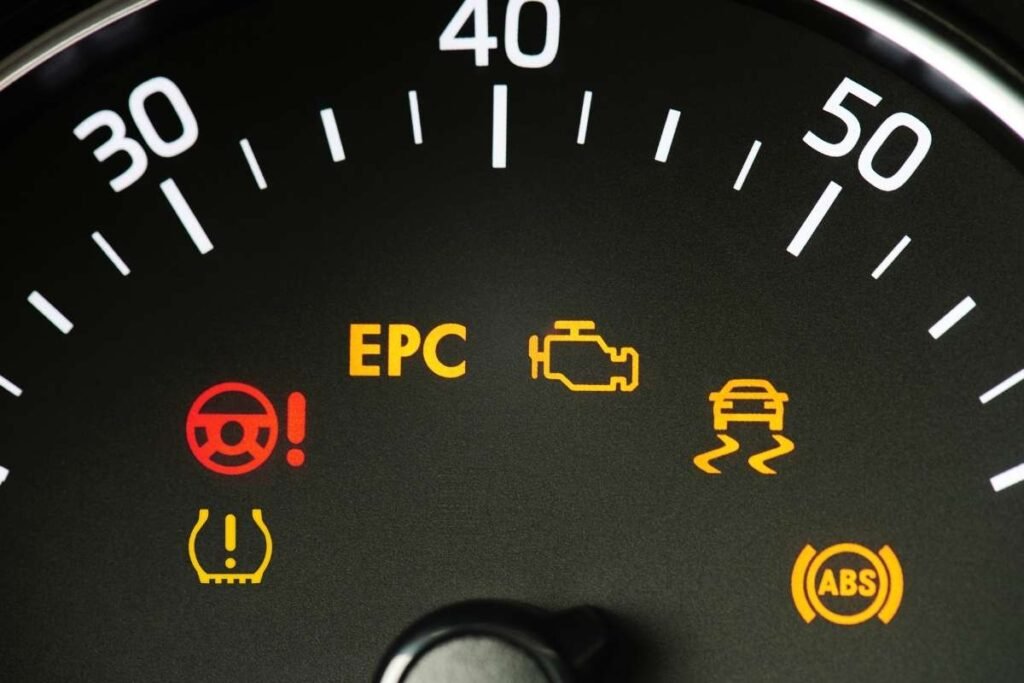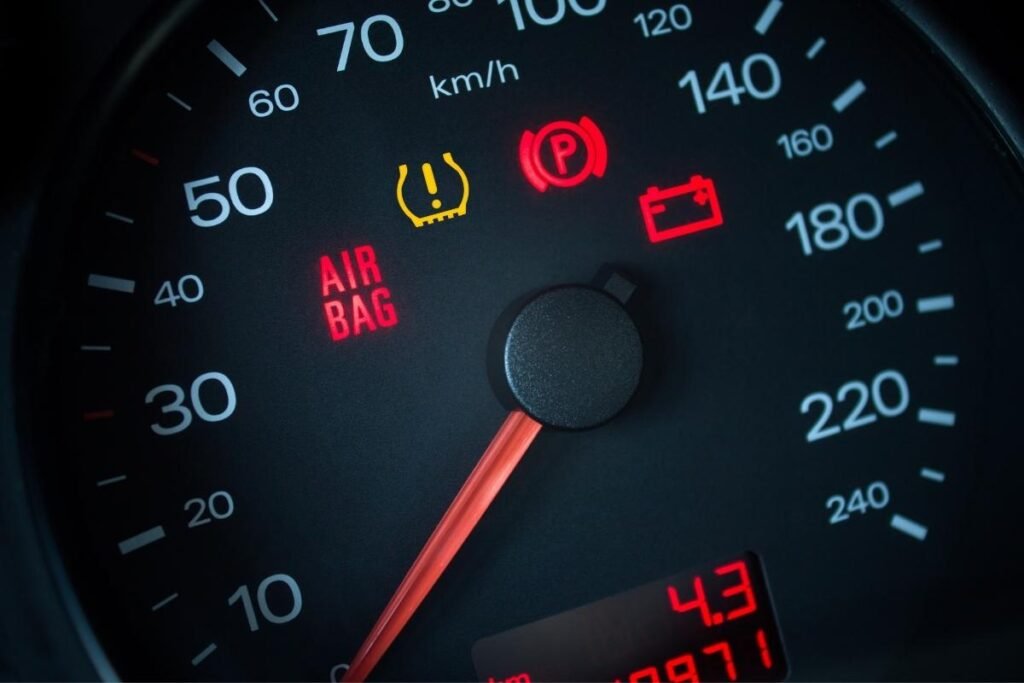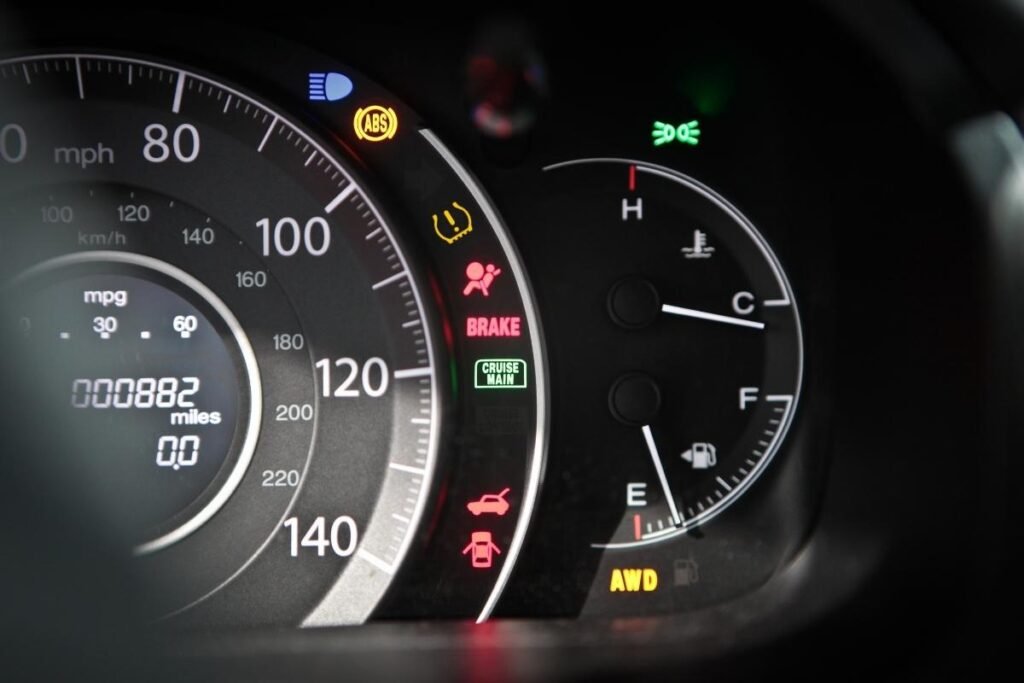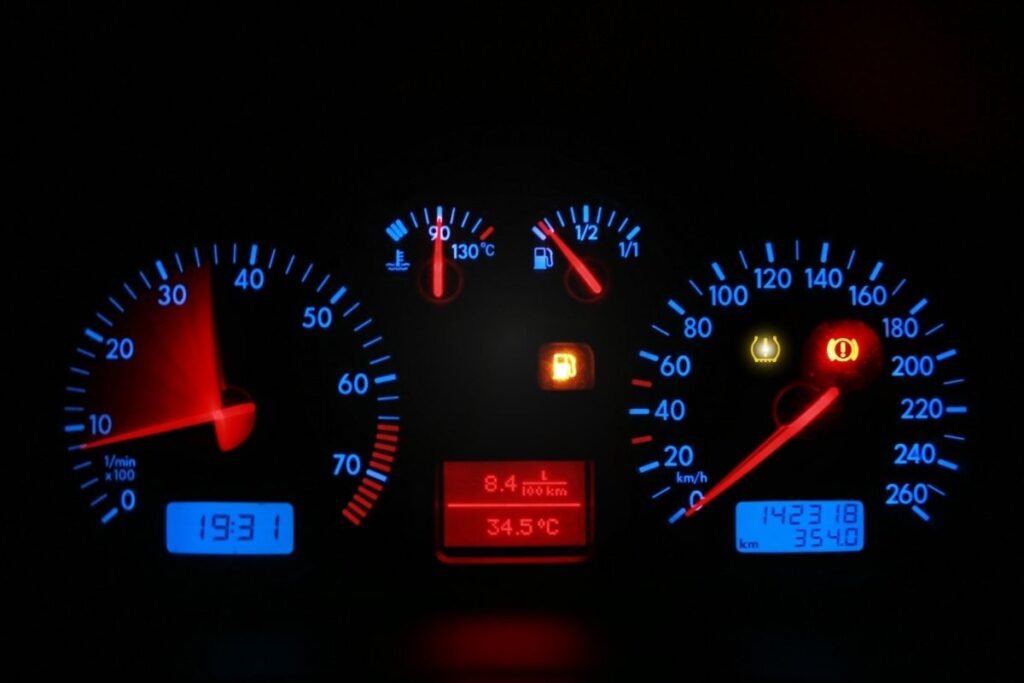How To Reset Tire Pressure Light and Troubleshooting
Back in 2019, my Toyota RAV4 Limited tire pressure light came on while I was on my way to an important meeting. I quickly pulled over, anxious to figure out how to reset tire pressure light immediately.
I hadn’t done this before, and I wasn’t too thrilled about making an expensive trip to the mechanic. I started by browsing online, finding various guides that all seemed a bit too technical. Determined to do it myself, I decided to dive in and figure it out.
After some trials and mistakes, to my relief, the tire pressure light finally went off. I felt a wave of satisfaction wash over me—it was a DIY victory.
I had managed to solve a car issue on my own without professional help. It wasn’t just about saving money, but also about the empowerment that came with it.
Every time I saw the TPMS light after that, I knew exactly what to do.
I wanted to share this (shared in a section below) with anyone who might feel daunted by car maintenance. You don’t always need a mechanic—sometimes, all it takes is a bit of patience and a willingness to learn.
For getting the proper output from the resetting process you must know some fundamental terms. Let see what’s that…
Maintenance Tips: Valve Stem Replacement
What is TPMS Light, and What does the Tire Pressure Light do?
The Tire Pressure Monitoring System (TPMS) light is a fundamental element in modern autos designed to alert drivers about low tire pressure.
When tire pressure falls, the TPMS activates the warning light on the dashboard, often resembling a horseshoe shape with an exclamation mark inside.
The light is an early warning system, prompting drivers to check their tire pressure to prevent potential issues, such as reduced handling, increased tire wear, and even blowouts.
Some TPMS systems can provide information about individual tire pressures, indicating low pressure and making it easier for drivers to identify which tire needs attention.
Monitoring and addressing tire pressure is crucial for maintaining optimal performance, safety, and fuel efficiency, as properly inflated tires enhance traction and reduce rolling resistance.

What is the Difference Between Tire Pressure Light and TPMS?
The tire pressure light and the TPMS (Tire Pressure Monitoring System) are closely related, but they refer to different components:
Tire Pressure Light:
The light is a dashboard indicator that is up to warn you when there’s an issue with your tire pressure. It often looks like an exclamation mark inside a horseshoe, symbolizing a tire.
The light activates when the TPMS senses that one or more tires are significantly under-inflated or over-inflated. It’s your alert to take action and check your tires.
Tire Pressure Monitoring System (TPMS):
TPMS is the entire system that keeps track of your tire pressures. It includes sensors either inside the tires or attached to the tire valves. These sensors constantly monitor the pressure in each tire and send the data to the vehicle’s onboard computer.
There are two main types of TPMS:
- Direct TPMS: Each tire has its own pressure sensor, which sends real-time pressure information to the vehicle’s computer.
- Indirect TPMS: This system estimates tire pressure by monitoring the speed of the wheels. It doesn’t measure the pressure directly but infers it based on wheel speed differences.
When the TPMS detects a pressure issue, it triggers the tire pressure light on your dashboard to alert you.
The TPMS does the heavy lifting by monitoring tire pressures and identifying issues, while the tire pressure light serves as a straightforward alert for you to take action.
This synergy between the two ensures that you stay informed about your tire health and can address any issues promptly.
How To Reset Tire Pressure Light Just in 5-Steps
At the start, as I told I was Determined to fix it myself without a costly trip to the mechanic, I dove into research and trial and error.
After some persistence, I finally found a method that worked perfectly. The process can be done in just 5 steps and is quite straightforward. Let’s check

Step 1. Check Tire Pressure:
Start by grabbing a tire pressure gauge. Check each tire to ensure they’re inflated to the manufacturer’s recommended levels.
This information is usually found on a sticker inside the driver’s door or in your owner’s manual. If any tires are under or over-inflated, adjust them accordingly.
Step 2. Turn On the Ignition:
Hop into the driver’s seat and turn the ignition to the “on” position without starting the engine. This powers up the car’s electronics without running the motor.
Step 3. Find and Press the Reset Button:
Look for the TPMS reset button, often located beneath the steering column or inside the glove box.
Press and hold this button until the tire pressure light on the dashboard blinks three times. This might take a few seconds, so hold the button steadily.
Step 4. Start the Car:
Now, turn the key (or press the start button) to fully start the engine. Let your car idle for about 10 minutes.
This period allows the TPMS sensors to recalibrate and communicate the correct tire pressure to the onboard computer.
Step 5. Drive:
Eventually, take your car for a short drive at a steady speed. This helps the TPMS system to fully recognize and log the new tire pressures.
Drive for at least 10 minutes to check everything resets properly.
Tire Pressure Light Reset Procedures for Popular Car Models
| Car Model | Reset Procedure | Notes |
| Toyota Camry | The light should turn off after driving a short distance. | Light should turn off after driving a short distance. |
| Honda Accord | 1. Adjust tire pressures. 2. Turn on the ignition. 3. Press the TPMS button until the light blinks twice. | If the light remains on, check for issues. |
| Ford F-150 | 1. Inflate tires to proper pressure. 2. Start the vehicle. 3. Go to the settings menu and select “Tire Pressure.” 4. Choose “Reset.” | Check the owner’s manual for specific steps. |
| Chevrolet Malibu | 1. Check all tires are inflated correctly. 2. Turn on the ignition. 3. Press the TPMS reset button (located under the steering column). | Light should turn off after a short drive. |
| Nissan Altima | 1. Correct tire pressures. 2. Start the vehicle. 3. Press the TPMS reset button until the light blinks three times. | Refer to the manual for specific button locations. |
| Hyundai Elantra | 1. Inflate tires to recommended levels. 2. Turn on the ignition. 3. Press and hold the TPMS reset button until the light blinks. | Light may reset automatically after driving. |
| Kia Sorento | 1. Adjust tire pressures. 2. Turn on the ignition. 3. Press the TPMS reset button until the light turns off. | Manual reset may be required after tire changes. |
| Volkswagen Jetta | 1. Inflate tires to correct pressures. 2. Turn on the ignition. 3. Use the “Menu” button to navigate to “Settings” and select “TPMS.” 4. Confirm the reset. | Light should turn off after a short drive. |
| Subaru Outback | 1. Ensure proper tire pressure. 2. Start the vehicle. 3. Press and hold the TPMS reset button (usually near the steering wheel). | Light should reset after driving. |
| Mazda 3 | 1. Inflate tires correctly. 2. Turn on the ignition. 3. Press the TPMS reset button until the light blinks. | Refer to the manual for specific procedures. |
How Frequent You Need to Reset the Tire Pressure Light
| Timing | Frequency of Reset | Description |
| Normal Driving Conditions | As Needed (Monthly) | Regular checks of tire pressure are recommended. Reset as necessary after adjustments. |
| After Tire Inflation | Immediate | Reset the tire pressure light after correcting any under- or over-inflation issues. |
| After Tire Rotation | Manual Reset Required | Some vehicles require a manual reset after rotating tires to recalibrate the system. |
| Seasonal Changes | Monthly (Before and After Seasons) | Check and adjust tire pressure with seasonal temperature changes; reset the light if necessary. |
| Persistent Light | Immediate | If the light remains on after correcting tire pressure, a manual reset is necessary. |
| After Repair or Replacement | Immediate | Reset the light after repairing or replacing tires or sensors to ensure accuracy. |
Do You Have to Reset the Tire Pressure Light? Why?
Yes, after fixing any tire pressure problems, we should reset the tire pressure light. Don’t let that tire pressure light keep you from cruising! It’s a friendly reminder that your tires need some TLC.
When it blinks on, it’s saying, ‘Hey, I need some air!’ By giving your tires the right pressure, you’ll be in for a smoother ride, better fuel economy, and a safer journey.
Here’s why resetting the light is important

Accuracy:
Resetting ensures the TPMS system recalibrates to monitor the correct tire pressures, providing precise information.
Clear Alerts:
It clears the old warning, ensuring the system is prepared to alert you to any new tire issues, preventing confusion.
System Health:
Regular resets maintain the TPMS functionality, reducing the chances of false alerts and ensuring it’s working correctly.
Safety:
Properly inflated tires are essential for safe driving, enhancing vehicle handling, fuel efficiency, and significantly reducing the risk of tire blowouts or accidents.
Peace of Mind:
Knowing that your TPMS is correctly reset and functioning gives you confidence in your vehicle’s safety, making your drives more secure and enjoyable.
Don’t let that pesky tire pressure light keep you from driving! It’s not just about turning it off, it’s about keeping your car in tip-top shape.
Does the Tire Pressure Light Reset Automatically?
The tire pressure light doesn’t always reset automatically. After you adjust the tire pressures to the correct levels, some vehicles require a manual reset to recalibrate the TPMS.
The reset can usually be done by pressing a reset button in the car, driving at a steady speed for a short period, or using the car’s menu system to perform the reset. Always consult your vehicle’s manual for the specific procedure.
The tire pressure light can reset automatically under certain conditions:
- TPMS Type: If your car has a TPMS system, it might automatically turn off the light after you fix the tire pressure. Usually, after you drive for about 10-15 minutes, the system will recalibrate and switch off the light if all your tires are at the right pressure.
- Stable Conditions: If the tire pressures are adjusted and remain stable, the system might recognize this stability and reset the light on its own during normal operation.
Automatic resets depend on the vehicle’s TPMS sophistication, so always refer to your car’s manual for specific details.

FAQs
Can cold weather cause the tire pressure light to come on?
Yes, cold weather can make tire pressure decrease and cause the TPMS light to come on. When temperatures drop, the air inside the tires contracts, so the pressure decreases. It’s a good idea to check and adjust your tire pressure in the colder months to make sure they are at the recommended pressure.
Is it safe to drive with the tire pressure light on?
It is not safe to drive with the tire pressure light on, as this light shows that one or even all tires may be underinflated. Underinflated tires lead to poor fuel efficiency, handling, and increased chances of tire failure. It is always good to have your tire pressure checked and adjusted just as soon as the light comes on.
How often should I check my tire pressure?
It’s recommended to check your tire pressure at least once a month and before long trips. Regular checks help ensure your tires are properly inflated, promoting better fuel efficiency, tire longevity, and overall vehicle safety.
Do I need to relearn the TPMS after rotating tires?
Yes, it is recommended to reset the TPMS after rotating your tires to maintain the accuracy of the readings. TPMS reset procedures vary with different vehicle makes and models, so refer to your owner’s manual for details on how to do it.
Can I reset the TPMS myself, or do I need to go to a mechanic?
In most cases, you can reset the TPMS yourself with the procedures in your owner’s manual. However, if the light remains on after you’ve tried a reset, or if you have reason to suspect a malfunction, you should have your vehicle checked by a professional mechanic.
What to Do if the Tire Pressure Light Is Still on After Filling Tires
In case the light does not go off after inflating the tires, this would mean that there is some problem with the TPMS sensor. It’s highly recommended to have your vehicle looked at by a professional mechanic for proper diagnosis and rectification.
Can I reset the tire pressure light without a TPMS reset button?
Yes, if your car does not have a TPMS reset button, you can also try driving at or above 50 mph for 10 minutes. Doing this can make the sensor reset when you start your car.
Why is my tire pressure light blinking?
A blinking tire pressure light usually indicates a fault in the TPMS. Be it a faulty sensor or the system itself, it is always better to take your car to the mechanic for diagnose and fixing the problem.





